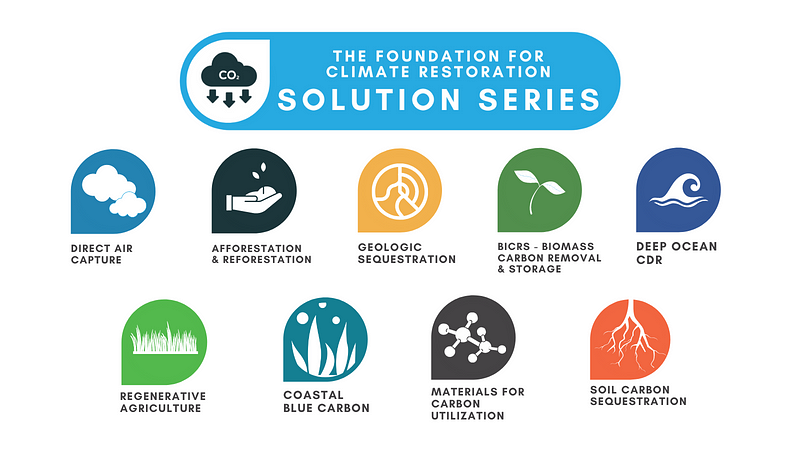Solution Series: Soil Carbon Practices

At F4CR, we’re often asked, “What are the solutions that can restore the climate?” In the coming months, we will attempt to answer this question (and more!) as they relate to nine categories of carbon dioxide removal (CDR) solutions. In this third month of our Solution Series, we examine the potential of soil carbon practices to contribute to climate restoration. Our new soil carbon white paper looks in greater detail at this solution’s climate restoration potential in terms of durability, financeability, scalability, and equity. This blog post gives a brief overview of some key points.
What are soil carbon sequestration and regenerative agriculture?
Soil carbon sequestration is a natural process where CO2 is captured by plants via photosynthesis and then stored as carbon in the plant’s leaves, stems, and roots.
Regenerative agriculture refers to processes and outcomes related to increasing soil carbon content and health. Processes include integrating crops and animals, using no-till agriculture, stopping or reducing the use of synthetic fertilizers and pesticides, and planting cover crops. Outcomes include enhancing carbon sequestration, improving soil health, increasing biodiversity, improving water resources, and increasing the social and economic wellbeing of communities.
Collectively, we refer to these as soil carbon practices.
Can soil carbon practices restore the climate?
Soil carbon practices vary in their durability, financeability, scalability, and equity. Each of these factors plays a key role in soil carbon’s capacity to contribute to climate restoration.
As a result, a considerable share of the carbon burden depends on such variables, which we describe below.
Durability: The timescale for carbon soil sequestration depends on the storage method used and the continuation of carbon-enhancing practices. On the high end, soils can store carbon for hundreds of thousands of years, and on the low end, captured carbon can be released immediately if practices are not maintained (e.g., if a farmer starts tilling soil that had previously been managed with no-till practices).
Scalability: Global estimates of the maximum scale of soil carbon sequestration range from 1 to 22 Gt annually by 2050. There are many factors determining the scale soil carbon practices can reach, and measuring the amount of carbon stored in soils over time is a major obstacle to refining these estimates. Further research is needed to learn which practices are most effective at boosting soil carbon, as well as measuring, reporting, and verifying the results.
Financeability: Depending on physical and socio-economic conditions, costs can range from $45 to $100/tCO2. Funding for these practices can come from federal and state governments, carbon markets, and the private sector.
Equity: The regenerative agriculture and soil carbon movement will need a reckoning before it can be implemented equitably on a global scale. These techniques have been practiced by BIPOC communities for generations, but past policies prevented them from acquiring government support and secure land tenure. Therefore, it is essential that these communities not only be engaged in the work of scaling up the processes, but also receive tangible benefits and reparations for past injustices.
Interested in learning more about soil carbon practices? Download our Soil Carbon White Paper and register for our soil carbon expert panel on Tuesday, June 28 at 1:00 pm Pacific.